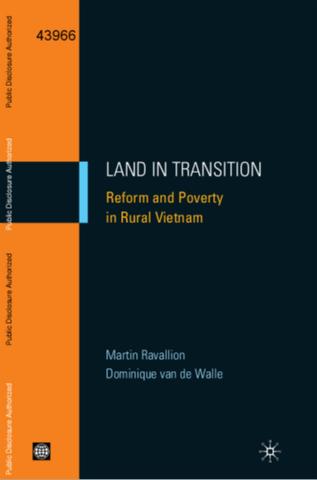The World Bank is a vital source of financial and technical assistance to developing countries around the world. We are not a bank in the ordinary sense but a unique partnership to reduce poverty and support development. The World Bank Group has two ambitious goals: End extreme poverty within a generation and boost shared prosperity.
- To end extreme poverty, the Bank's goal is to decrease the percentage of people living on less than $1.25 a day to no more than 3% by 2030.
- To promote shared prosperity, the goal is to promote income growth of the bottom 40% of the population in each country.
The World Bank Group comprises five institutions managed by their member countries.
The World Bank Group and Land: Working to protect the rights of existing land users and to help secure benefits for smallholder farmers
The World Bank (IBRD and IDA) interacts primarily with governments to increase agricultural productivity, strengthen land tenure policies and improve land governance. More than 90% of the World Bank’s agriculture portfolio focuses on the productivity and access to markets by small holder farmers. Ten percent of our projects focus on the governance of land tenure.
Similarly, investments by the International Finance Corporation (IFC), the World Bank Group’s private sector arm, including those in larger scale enterprises, overwhelmingly support smallholder farmers through improved access to finance, inputs and markets, and as direct suppliers. IFC invests in environmentally and socially sustainable private enterprises in all parts of the value chain (inputs such as irrigation and fertilizers, primary production, processing, transport and storage, traders, and risk management facilities including weather/crop insurance, warehouse financing, etc
For more information, visit the World Bank Group and land and food security (https://www.worldbank.org/en/topic/agriculture/brief/land-and-food-security1
Resources
Displaying 3996 - 4000 of 4907Approaches to Urban Slums : A Multimedia Sourcebook on Adaptive and Proactive Strategies
Approaches to urban slums are a
multimedia sourcebook that comprises 14 self-running
audiovisual presentations and 18 video interviews. It is
organized into four broad sections: adaptive approaches,
proactive approaches, case profiles, and thematic
interviews. The sourcebook itself, which contains more than
nine viewing hours of content on CD-ROM, does not exist in
printed format. This guide provides an overview of the
Transport Prices and Costs in Africa : A Review of the International Corridors
The objective of the study is to
examine, identify, and quantify the factors behind
Africa's high prices for road transport. Such prices
are a major obstacle to economic growth in the region, as
shown in several studies. For example, Amjadi and Yeats
(1995) concluded that transport costs in Africa were a
higher trade barrier than were import tariffs and trade
restrictions. Other analyses by the World Bank (2007a)
China 2030 : Building a Modern, Harmonious, and Creative High-Income Society [pre-publication version]
China should complete its transition to a market economy--through enterprise, land, labor, and financial sector reforms--strengthen its private sector, open its markets to greater competition and innovation, and ensure equality of opportunity to help achieve its goal of a new structure for economic growth.
The Growth Report : Strategies for Sustained Growth and Inclusive Development
The report has four main parts. In the
first, the commission reviews the 13 economies that have
sustained, high growth in the postwar period. Their growth
models had some common flavors: the strategic integration
with the world economy; the mobility of resources,
particularly labor; the high savings and investment rates;
and a capable government committed to growth. The report
goes on to describe the cast of mind and techniques of
Land in Transition : Reform and Poverty in Rural Vietnam
The policy reforms called for in the
transition from a socialist command economy to a developing
market economy bring both opportunities and risks to a
country's citizens. In poor economies, the initial
focus of reform efforts is naturally the rural sector, which
is where one finds the bulk of the population and almost all
the poor. Economic development will typically entail moving
many rural households out of farming into more remunerative








